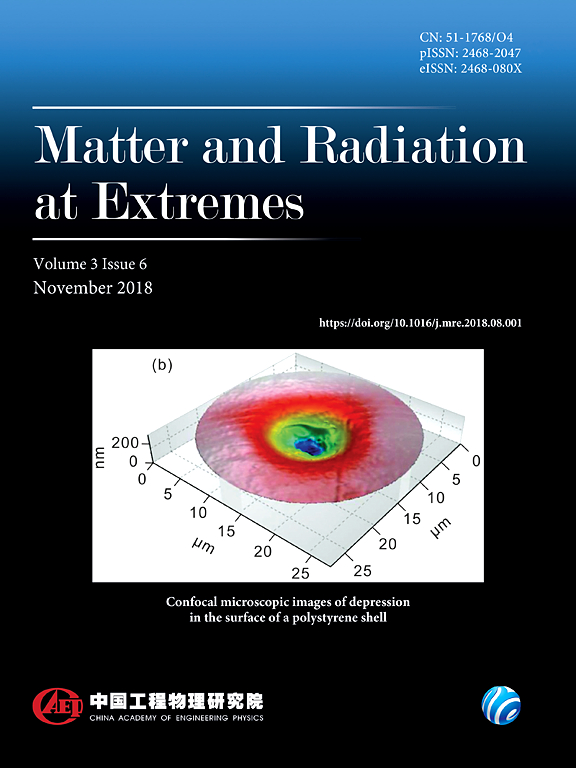铈促进二氮在中压下转化为高能量密度材料CeN6
IF 4.8
1区 物理与天体物理
Q1 PHYSICS, MULTIDISCIPLINARY
引用次数: 2
摘要
合成压力和结构稳定性是高能材料的两个关键因素,最近的研究表明,铈是N2还原反应的有效催化剂。在这里,我们通过第一性原理计算系统地探索了Ce-N化合物,证明了铈原子可以削弱N≡N键的强度,并且在中等压力下可以形成丰富多样的铈多氮化物。值得注意的是,由于铈的强配体效应,P1 -CeN6在层状金属多氮化物中具有最低的合成压力(32 GPa)。本文提出的P1 -CeN6层状结构由新颖的N14环组成。为了阐明P1′-CeN6的形成机理,提出了Ce + 3N2→反式cen6→P1′-CeN6的反应路径。此外,P1′-CeN6具有较高的硬度(20.73 GPa),可以淬火到环境条件。铈原子与N14环之间的电荷转移对结构的稳定性起着至关重要的作用。P1 -CeN6的体积能密度(11.20 kJ/cm3)远大于TNT (7.05 kJ/cm3),爆轰压力(128.95 GPa)和爆轰速度(13.60 km/s)分别是TNT的7倍和2倍左右,是一种很有前途的高能量密度材料。本文章由计算机程序翻译,如有差异,请以英文原文为准。
Cerium-promoted conversion of dinitrogen into high-energy-density material CeN6 under moderate pressure
Synthesis pressure and structural stability are two crucial factors for highly energetic materials, and recent investigations have indicated that cerium is an efficient catalyst for N2 reduction reactions. Here, we systematically explore Ce–N compounds through first-principles calculations, demonstrating that the cerium atom can weaken the strength of the N≡N bond and that a rich variety of cerium polynitrides can be formed under moderate pressure. Significantly, P1̄-CeN6 possesses the lowest synthesis pressure of 32 GPa among layered metal polynitrides owing to the strong ligand effect of cerium. The layered structure of P1̄-CeN6 proposed here consists of novel N14 ring. To clarify the formation mechanism of P1̄-CeN6, the reaction path Ce + 3N2 → trans-CeN6 → P1̄-CeN6 is proposed. In addition, P1̄-CeN6 possesses high hardness (20.73 GPa) and can be quenched to ambient conditions. Charge transfer between cerium atoms and N14 rings plays a crucial role in structural stability. Furthermore, the volumetric energy density (11.20 kJ/cm3) of P1̄-CeN6 is much larger than that of TNT (7.05 kJ/cm3), and its detonation pressure (128.95 GPa) and detonation velocity (13.60 km/s) are respectively about seven times and twice those of TNT, and it is therefore a promising high-energy-density material.
求助全文
通过发布文献求助,成功后即可免费获取论文全文。
去求助
来源期刊

Matter and Radiation at Extremes
Physics and Astronomy-Atomic and Molecular Physics, and Optics
CiteScore
8.60
自引率
9.80%
发文量
160
审稿时长
15 weeks
期刊介绍:
Matter and Radiation at Extremes (MRE), is committed to the publication of original and impactful research and review papers that address extreme states of matter and radiation, and the associated science and technology that are employed to produce and diagnose these conditions in the laboratory. Drivers, targets and diagnostics are included along with related numerical simulation and computational methods. It aims to provide a peer-reviewed platform for the international physics community and promote worldwide dissemination of the latest and impactful research in related fields.
 求助内容:
求助内容: 应助结果提醒方式:
应助结果提醒方式:


